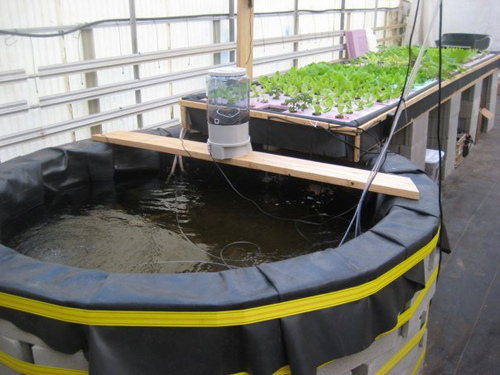Local, organic fish are difficult to come by in Cincinnati, and experts do not recommend consuming fish caught from the Ohio River very often. A company called Self-Sustaining Enterprises (SSE) is looking to fill that void with an innovative practice that will bring locally grown, organic fish to the Cincinnati region.
Based in Mason, Ohio, SSE started an aquaponic tank in Jos, Nigeria and is now bringing the prototype to Cincinnati. The aquaponics system works by combining fish farming techniques with hydroponics to create a faux river ecosystem.
Fish fingerlings (perch, catfish, and tilapia in this case) are then grown in the tank. The waste from the fish – ammonia and nitrates -provides food for the plants that are on the surface of the tank where they purify the water by soaking up the nitrates and ammonia.
“Aquaponics is perfect for an urban community,” said Self-Sustaining Enterprises CEO Chuck Proudfit. “We can raise fresh fish and vegetables in a high-density fashion, harvest and deliver them the same day.”
Proudfit says that the goal of the project is to provide fresh fish and produce to local restaurants, food co-ops, and other sources. The locally sourced fish would then leave a smaller carbon footprint behind than fish shipped in from other parts of the world. Another benefit of the system, experts say, is the elimination of the risk of harmful runoff common amongst fish farms.
“With an aquaponic tank the problem [of harmful runoff] is eliminated due to merging aquaculture and hydroponics into a closed-loop system,” explained Pete West, an engineer with Procter & Gamble who donated funds to the endeavor. As West explains, water then only has to be replaced due to evaporation or the removal of solid waste at the bottom of the tank.
Aquaponics is not a complete slam dunk however. Unlike a natural habitat for a fish there is a risk of overcrowding since the fish have only a few hundred feet to swim. This overcrowding makes it necessary for the nitrate, ammonia and pH levels to be checked daily. The more fish that are added to the confined habitat increases the likelihood of high nitrate and ammonia levels – which could cause illness among people consuming the fish.
SSE’s 700-gallon aquaponics project in Cincinnati is operational now, and has the ability to produce 1,000 pounds of fish and fresh produce. Company leaders say that both the fish and produce are growing well and should be available within six to twelve months.
This story was researched and written by UrbanCincy contributor Hailey Mahan. If you are interested in becomming an UrbanCincy contributor please email your resume and field of interest to UrbanCincy@gmail.com.

